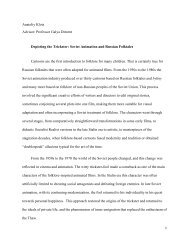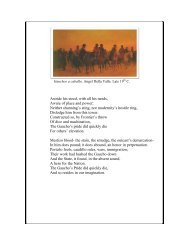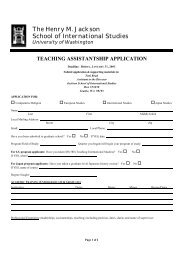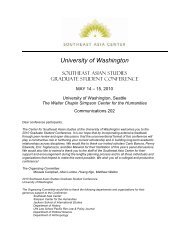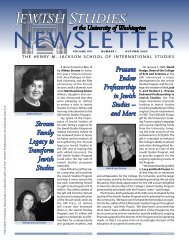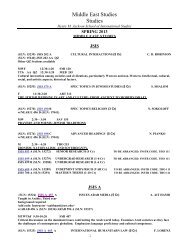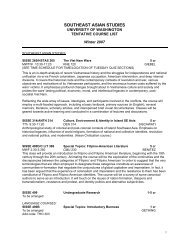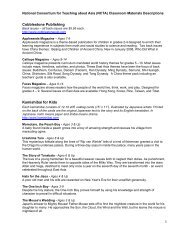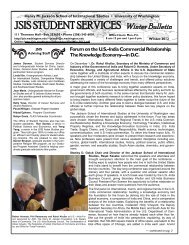to view full paper
to view full paper
to view full paper
You also want an ePaper? Increase the reach of your titles
YUMPU automatically turns print PDFs into web optimized ePapers that Google loves.
problem of a male member of the family, usually a father or a brother, occasionally, a husband;<br />
2) seeking an adventure, or 3) escaping an unacceptable marriage or an evil pursuer. In the rest<br />
of the <strong>paper</strong>, I examine specific tales organized according <strong>to</strong> the framework outlined above for<br />
their attitudes <strong>to</strong>wards female power.<br />
Narratives Told from the Male Protagonist’s Point of View<br />
Seeking a Bride, ATU 519<br />
The hostile bride is a magical woman-batyr. Batyr is a Turkic word denoting an<br />
exceptionally strong warrior, knight, or champion who, as a rule, also has an exceptionally<br />
powerful horse. She is a personage related <strong>to</strong> shieldmaidens of the Germanic and Scandinavian<br />
folklore and <strong>to</strong> bogatyr’ women or polentitsas of Eastern Slavic folklore. Most likely her origin<br />
is in the exogamy theme strongly emphasized in many a Central Asian folktale in general. 6 The<br />
tale type is summarized by Stith Thompson as follows:<br />
In this tale of The Strong Woman as Bride (Type 519) a prince and his faithful<br />
and extraordinary companion woo a bride who is beautiful, strong, and warlike,<br />
and who will have as a husband no man who is not her equal in strength. The<br />
prince must wield her gigantic weapons and ride her untamed steed. 7<br />
This type is found in all of the examined national collections.<br />
For example, in Azerbaijani tale “Сказка об Искандере-шахе [Tale of Iskander-<br />
shah],” the s<strong>to</strong>ry of the hero, whose pro<strong>to</strong>type is Alexander the Great, includes the<br />
narrative on his mother’s wooing—the future mother of Iskander is a supernaturally<br />
strong bride with whom the future father of the hero competes in horse races, archery,<br />
6 As late as in the XIX century, Aleksei I. Levshin reports that the Kirghiz made a point of marrying their enemy<br />
Kalmyk women in his Описание киргиз-кайсацких, или киргиз-казачьих, орд и степей, чч. I-III [A description of<br />
Kirghiz-Kaisats, or Kirghiz-Cossack, hordes and steppes in three volumes] (Sankt-Petersburg, 1832), Volume III,<br />
109.<br />
7 The Folktale (New York: The Dryden Press, 1946), 112-113.<br />
5



